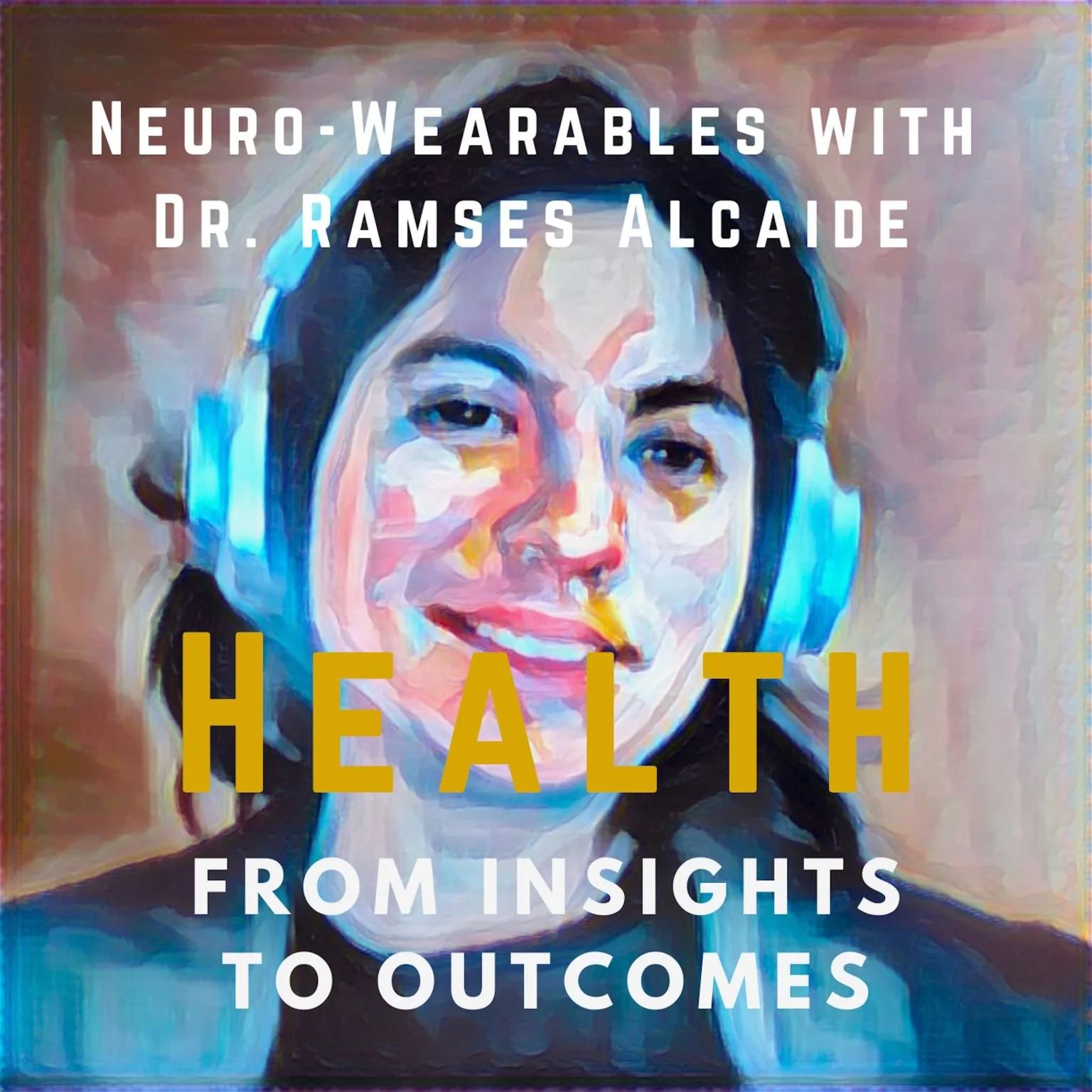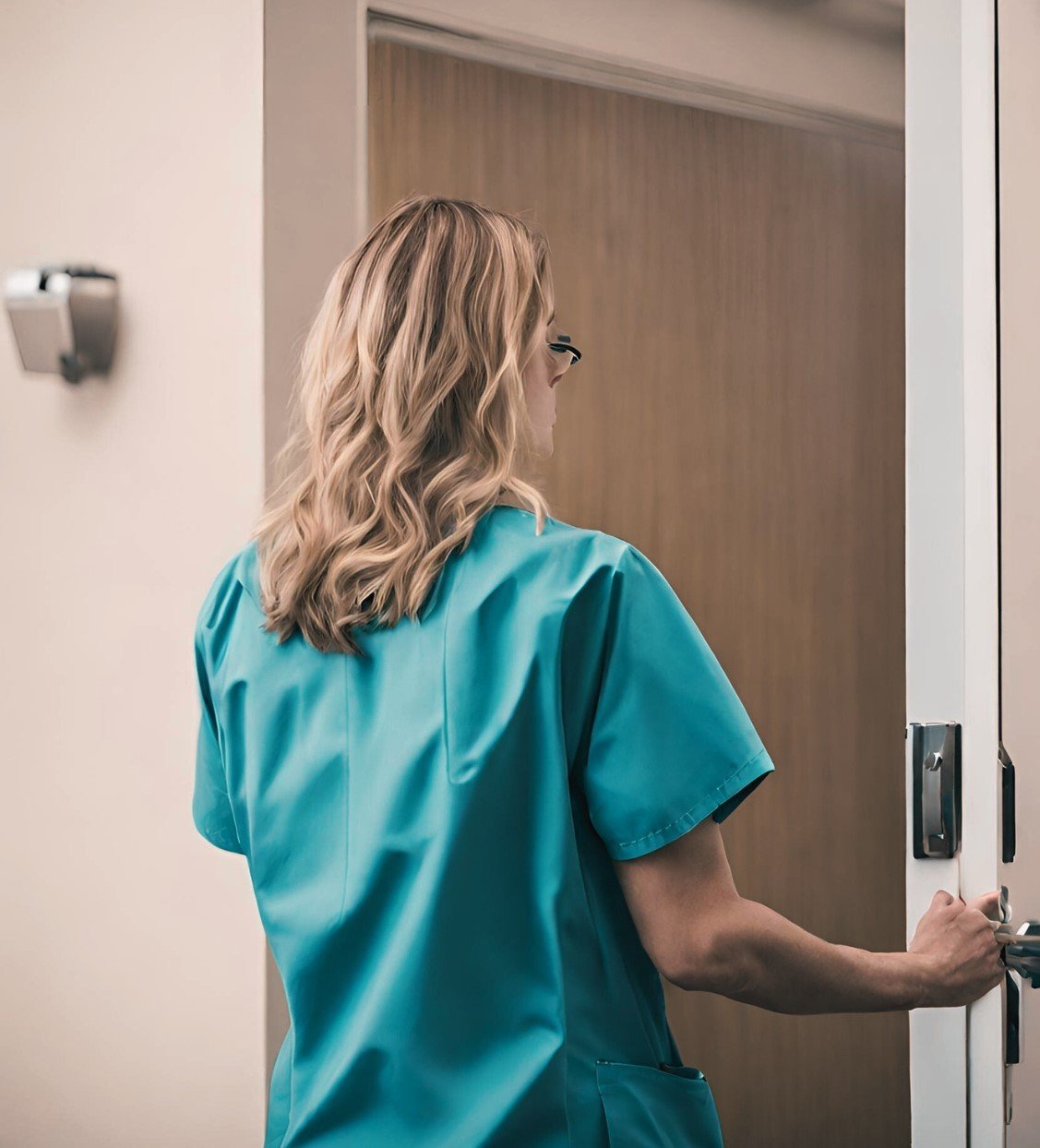Focus on Physicians:
Insights, Ideas, and Strategies
The Power of the Pause: Creating Engagement and Presence
What if you took the concept of taking a timeout pause out of the OR or procedure lab and into the other demanding parts of your day? Taking a moment to come up for air between office visits, meetings, or complex patient care could help to clear your mind and reset your focus. But very few of us actually do this.
Research from Microsoft's Human Factors Lab supports the idea that taking a personal pause can not only help you to reset but may even improve your engagement with your next patient or procedure. In this article, I’ll show you how you can work brief moments of mindfulness into your day, without slowing you down.
An earlier version of this article appeared on this website in November 2023.
If you’re a surgeon or proceduralist, you already know the power of a timeout. That intentional pause before a procedure—where the entire team stops to confirm the plan, clarify roles, and ensure nothing has been missed—is more than a safety checklist. It’s a brief, structured moment of presence.
What if you took the concept of taking a pause out of the OR or the lab and into the other demanding parts of your day? Taking a moment to come up for air between office visits, meetings, or complex patient care could help to clear your mind and reset your focus. But my guess is that very few of us actually do this.
Backed by Data: The Power of a Brief Reset
Research from Microsoft's Human Factors Lab supports the idea that taking a personal pause can not only help you to reset but may even improve your engagement with your next patient or procedure.
Since this was Microsoft, the study looked at the way people engaged in meetings. The 14 subjects were tasked with wearing an EEG while participating in video meetings. Each meeting lasted 30 minutes. On one day, they took part in four back-to-back meetings, without a break. On the other, each meeting was followed by a 10-minute pause. Instead of simply checking their phones, the participants meditated with the Headspace app.
The results were striking: analysis of brain wave activity revealed that even a short meditation pause led to increased engagement in the meeting that followed.
Conversely, with no pause, there was EEG evidence of greater stress during the next meeting.
We often equate productivity with hours slogged and logged. But this study—and others like it—suggest that sustained engagement may be a more meaningful, and healthier, metric.
The business world may embrace concepts like mindful pauses, but applying them in healthcare can be more challenging. Between the unending inbox, your dwindling support staff, and the push to do just one more thing, the pace can feel relentless.
But that’s exactly why building in brief, intentional moments of stillness—even just a breath between tasks—can be so powerful. These moments give you a chance to regather and reharness your energy and your focus.
Practical Strategies for Pressing Pause
How can you begin to practice taking a pause? It’s not always practical to take a 10-minute break for meditation in the middle of a busy day. But even a few mindful moments can help. Here are a few practical tips that can help you to create a little breathing space for yourself and to be more present for your patients:
Breathe Mindfully
Take a few deep, intentional breaths before going in to see a difficult or complex patient. Focus on the sensation of the breath entering and leaving your body. This simple act can help anchor your awareness to the present moment.
Body Scan
Conduct a quick body scan to release tension. Start from the top of your head and gradually move down to your toes, paying attention to any areas of tightness or discomfort. Allow these areas to relax, even if it’s just a little.
Mindful Observation
Take a moment to observe your surroundings without judgment or reactivity. Notice the colors, textures, and sounds in your environment. This brief shift in attention can provide a mental break and promote a sense of calm.
Name What You’re Feeling
Before moving on to the next patient or task, pause to mentally name what you’re feeling. That could be anything. Perhaps it’s overwhelmed, focused, frustrated, or calm. It doesn’t really matter whether it’s positive, negative, or neutral. This brief check-in helps increase your emotional awareness and gives you a chance to reset before shifting gears.
Feel Your Feet
As you’re walking down the hall or in from the parking lot, take a moment to bring your awareness to the sensation of your feet on the ground. Feel the pressure and the contact as your shoes connect with the floor. This small act of grounding can quickly bring you back to the present.
Set an Intention
Before a meeting or procedure, pause for a few seconds and mentally set an intention. Perhaps it’s “Stay focused,” “Listen with awareness,” or “Lead with presence.” A clear intention can shape how you show up, even in high-pressure moments.
Hand Over Heart
If you’re feeling overwhelmed or scattered, place your hand over your heart and take a few deep breaths. This simple gesture engages your parasympathetic nervous system and can create a sense of grounding and self-compassion.
From Personal Practice to System Shift
Taking a mindful pause is not just a momentary escape from a hectic schedule. By taking a few moments of stillness to reset, you access a powerful way to recharge your energy, sharpen your focus, and deepen your connection with the people you care for. Over time, these brief pauses become an investment in your well-being and in the quality of your presence.
It’s time for healthcare organizations to embrace what companies like Microsoft have already realized: sustainable performance requires space to pause. These moments can’t just be the responsibility of the individual—they must be supported by the system. When organizations stop trying to fill every second and instead allow time for reflection and reset, they empower physicians to stay engaged, energized, and able to deliver their best care.
If you’ve enjoyed this article and would like to stay in the loop for more insights on creating a sustainable, fulfilling, and happy life as a physician, sign up for my newsletter or reach out on my website. I’d love to hear from you.
And if you’d like to schedule a complimentary coaching discovery session, click the button below.
Art, Mindfulness, and Medical Practice: Wu Zhen’s The Fisherman
As a fine art photographer and a physician, I believe that visual art is a portal through which we can find powerful connections between ourselves and people from all walks of life.
For physicians and others in healthcare, art can provide a framework that offers the potential to build understanding and create greater trust. By spending time with a work of art, we’re able to explore what the world might mean to somebody completely different from us.
In this article, I’ll explore Wu Zhen’s The Fisherman, and the lessons it offers for medical practice.
As a fine art photographer and a physician, I believe that visual art is a portal through which we can find powerful connections between ourselves and people from all walks of life.
For physicians and others in healthcare, art can provide a framework that offers the potential to build understanding and create greater trust. By spending time with a work of art, we’re able to explore what the world might mean to somebody completely different from us.
Art is also a way to access mindfulness in a way that feels meaningful and relatable. It only takes a few minutes of focused attention to gain a greater and more subtly shaded experience.
Think of the way that you listen to music. It may be simply background noise, other times entertainment, but there are times that the experience offer a gateway to new ideas, or a way to connect the dots that have been accumulating in your subconscious mind.
In a previous article, I shared the very contemporary insights and connections that we can access by spending time with Vermeer’s The Geographer, painted in the 1600s. In this article, I’ll explore an even older work of art: Wu Zhen’s The Fisherman.
Wu Zhen, The Fisherman (attribution: Wu Zhen, Public domain, via Wikimedia Commons)
Wu Zhen painted in the 14th century. In his lifetime, he was not really acknowledged or recognized as being an important artist. But about a hundred years later, he was identified as one of the four Great Masters of the Yuan. As a result, his work became a real point of reference for many subsequent artists, and that continues to this day.
When Wu Zhen was painting, his country was in chaos as a result of the Mongol takeover. Despite (or perhaps because of) this turmoil, there was tremendous cultural growth. At the time, there was a very powerful, industrious scholar class that was highly visible in public life. For the middle class, that was a realm of life to aspire to.
But there was also an idealized life of a simpler and more rural lifestyle. Although Wu Zhen was educated and could well have lived comfortably as a scholar, he chose to take his life in a slower direction, away from the turmoil and conflict that was part of life in the city.
Through his work, he sought to capture and distill the essence of his subject with line, shade, and pattern. Many of his works, like this one, included a poem written in calligraphy, which is translated by the Metropolitan Museum of Art as:
Red leaves west of the village reflect evening rays,
Yellow reeds on a sandy bank cast early moon shadows.
Lightly stirring his oar,
Thinking of returning home,
He puts aside his fishing pole, and will catch
no more.
So he lived this very simple rural lifestyle, yet was a man of great intellect.
At the same time, in the cities, other Chinese artists were creating more literal portraiture. But it was understood that there was a difference between this more factual based way of working versus the more ethereal and intellectual work of somebody like Wu Zhen.
In our contemporary age, such a longing for simplicity or austerity may be interpreted as a sign of a less sophisticated or uneducated mind. Yet these preconceptions can be misleading. Wu Zhen’s work is a reminder that in accepting such a one-dimensional stereotype, we may overlook the richness and depth of an individual. And we are all the worse for the loss.
How can you transfer the experience of art to the practice of medicine? Consider what happens when you meet a patient or somebody in your everyday life. With the brief time allotted for the encounter, you might only be given the outlines of that person, almost like a quick sketch.
Perhaps if you’re open to this richer way of seeing, you will take a few moments to appreciate those outlines, and to notice that more often than not, they do not fit into a simple template. In doing so you might be able to discern more layers than you first realized. Perhaps it’s the choice of clothing, the way they carry themselves, the book they hold in their hand. And as a result, your questions may become more nuanced and your listening more focused.
Think about this way of relating as creating sort of a bridge between you and the other person. You might be able to find a connection or trace a thread of a clue in the same way as you might experience a work of art.
An earlier version of this article appeared on this website in April 2023.
If you’ve enjoyed this article and would like to stay in the loop for more insights on creating a sustainable, fulfilling, and happy life as a physician, sign up for my newsletter or reach out on my website. I’d love to hear from you.
If you’d like to learn more about my coaching practice, you can schedule a complimentary introductory meeting by clicking the link below.
Three Things Physicians Should Know About Meditation
Meditation is a hot topic with deep roots. It’s often touted as an antidote to burnout, when in truth most of us know that a meditation app won’t solve the systemic issues that plague healthcare today. It’s no wonder that some physicians might be skeptical. That’s why it’s exciting that academic researchers have been taking this ancient practice seriously. And they are discovering that meditation can have powerful and measurable benefits for your mental well-being, memory, and even your physical health.
An earlier version of this article appeared on the KevinMD website in November, 2o23.
Meditation is a hot topic with deep roots, but sometimes it feels like it’s being pushed as a modern-day version of snake oil for what ails the spirit.
The practice is often touted as an antidote to burnout, when in truth most of us know that a meditation app won’t solve the systemic issues that plague healthcare today. It’s no wonder that some physicians might be skeptical.
That’s why it’s exciting that academic researchers have been taking this ancient practice seriously. And they are discovering that meditation can have powerful and measurable benefits for your mental well-being, your memory, and even your physical health.
A quick search on PubMed.gov retrieves thousands of reports and peer-reviewed studies on meditation, the majority of which were published in the past 10 years. Getting a handle on the health benefits of meditation could take you down a fascinating, twisty-turny rabbit hole worthy of Alice in Wonderland.
There are many forms of meditation, but this article will focus on mindfulness meditation. This is sometimes known as Vipassana or insight meditation, although Vipassana is a more specific form of meditation that comes from the Buddhist tradition.
Mindfulness meditation is a form of meditation that focuses on being present in the current moment, slowing down your thoughts, and observing without judgement. These features make mindfulness meditation especially valuable for physicians.
Here are three things that you should know about mindfulness meditation.
Meditation may enhance your skills as a physician.
There is a broad range of research looking at the impact of meditation on neuroanatomy and neurophysiology. For physicians, the ability to focus on the details, remain present for our patients, and maintain equanimity when faced with stressful situations are especially important.
Meditation can help by
Improving the ability of the brain to pay attention to a task
Enhancing body awareness
Helping you to regulate your emotions
Increasing capacity for memory
Boosting your sleep quality
Improving your cardiovascular health
It may be best to meditate in the morning.
Although meditation may improve your sleep quality, there is good evidence that in the short term, mindfulness meditation can actually increase brain arousal. Why does this happen? The theory is that since meditation may help to focus the mind, this can result in heightened awareness and attention. That’s why it may be better for most people to meditate at the beginning of the day.
A five-minute daily meditation can have lasting benefits
Morning might be the best time to meditate, but few of us are willing to wake up 30 minutes early just to sit quietly in a comfortable position. The good news is that a study of stressed-out mental health professionals found that a mere 5 minutes of mindfulness meditation can have important benefits.
How to get started with meditation
Getting started with meditation is easy. Counter to what you might have heard, you don’t have to escape to an ashram or travel to a tropical island to learn how to do it. I’ve written a quick-start guide to meditation for physicians that you can access here.
As with many things, meditation isn’t for everyone. For some, it can even create mental distress. If you find that meditation provokes anxiety or agitation, it may be best to avoid it. And if you’re under the care of a mental health professional, check in with them first before beginning a meditation practice.
If you’ve enjoyed this article and would like to stay in the loop for more insights on creating a sustainable, fulfilling, and happy life as a physician, sign up for my newsletter or reach out on my website. I’d love to hear from you.
If you’d like to learn more about my coaching practice, you can schedule a complimentary introductory meeting by clicking the link below.
References:
Britton WB et al. Awakening is not a metaphor: the effects of Buddhist meditation practices on basic wakefulness. Ann N Y Acad Sci. 2014 Jan;1307:64-81.
Fox KC et al. Is meditation associated with altered brain structure? A systematic review and meta-analysis of morphometric neuroimaging in meditation practitioners. Neurosci Biobehav Rev. 2014 Jun;43:48-73.
Hölzel BK et al. Mindfulness practice leads to increases in regional brain gray matter density. Psychiatry Res. 2011 Jan 30;191(1):36-43.
Kozasa, EH et al. Meditation training increases brain efficiency in an attention task. NeuroImage, 2012 Jan; 59: 745-749,
Krittanawong C et al. Meditation and Cardiovascular Health in the US. Am J Cardiol. 2020 Sep 15;131:23-26.
Lam AG et al. Effects of Five-Minute Mindfulness Meditation on Mental Health Care Professionals. J Psychol Clin Psychiatry 2015 March; 2(3): 00076.
Levine, G. N., Lange, R. A., Bairey‐Merz, C. N., Davidson, R. J., Jamerson, K., Mehta, P. K., Michos, E. D., Norris, K., Ray, I. B., Saban, K. L., Shah, T., Stein, R., & Smith, S. C. (2017). Meditation and cardiovascular risk reduction. Journal of the American Heart Association, 6(10). https://doi.org/10.1161/jaha.117.002218
Pérez-Peña M et al. Mindfulness-Based Interventions and Body Awareness. Brain Sci. 2022 Feb 18;12(2):285.
Rusch HL et al. The effect of mindfulness meditation on sleep quality: a systematic review and meta-analysis of randomized controlled trials. Ann N Y Acad Sci. 2019 Jun;1445(1):5-16.
Taylor, G. B., Vasquez, T. S., Kastrinos, A., Fisher, C. L., Puig, A., & Bylund, C. L. (2022). The Adverse Effects of Meditation-Interventions and Mind–Body Practices: a Systematic Review. Mindfulness, 13(8), 1839–1856. https://doi.org/10.1007/s12671-022-01915-6
Youngs MA, Lee SE, Mireku MO, Sharma D, Kramer RSS. Mindfulness Meditation Improves Visual Short-Term Memory. Psychol Rep. 2021 Aug;124(4):1673-1686. doi: 10.1177/0033294120926670. Epub 2020 May 25. PMID: 32448056; PMCID: PMC8242403.
Wu R et al. Brief Mindfulness Meditation Improves Emotion Processing. Front Neurosci. 2019 Oct 10;13:1074.
The Hidden Downsides of Meditation: A Guide for Physicians
Meditation has numerous benefits for physicians, but there are also a few drawbacks that are not often discussed. With widespread recommendations for meditation and meditation apps, it’s important to keep in mind that meditation is not for everyone. Potential downsides include worsening of anxiety, insomnia, rumination, and physical discomfort. . By starting with shorter sessions, being mindful of any arising emotions or negative feelings, and ensuring a comfortable posture, you can minimize risks.
As a physician coach and certified mindfulness meditation teacher, I find meditation to be a powerful and sustaining practice.
Meditation, especially a mindfulness practice, has been shown to improve focus and to mitigate stress and burnout. It can even improve sleep quality.
But while meditation has numerous benefits, there are also a few drawbacks that are not often discussed. With widespread recommendations for meditation and meditation apps, it’s important to keep in mind that meditation is not for everyone.
For some people, meditation may have unintended, and unexpected consequences. In some cases, simply changing the time of day or duration of practice can make all the difference. In this article, we’ll explore the potential downsides, along strategies for getting the most benefit from meditation and mindfulness practices.
Mental Health Impact
Because of its inward focus, meditation can sometimes bring up uncomfortable emotions or past traumas. People with diagnosed anxiety often benefit from meditation, but they may be especially vulnerable to this negative effect.
Of course, it’s normal to feel a little anxious when you are not accustomed to sitting quietly. Cultivating stillness can take time. But if the anxiety does not lessen, or if you are not able to let go of uncomfortably intrusive thoughts, then meditation may not be right for you.
And while detachment is often a goal of mindfulness meditation, some people may develop a distressing sense of detachment from reality.
Longer meditation sessions, including meditation retreats, are more likely to cause this type of trouble. If you are prone to anxiety or depression, it makes sense to keep your sessions to 20 minutes or less and to approach meditation gently.
Seek professional guidance if intense emotions or memories arise that are difficult to manage on your own.
Insomnia
Mindfulness meditation can improve your sleep quality. But a focused meditation at bedtime might actually cause the mind to become more alert, making it harder to fall asleep.
Consider meditating in the morning, mid-day, or before you head home from work. That way you’ll refresh your mind and gently reset your focus for the rest of the day ahead.
Decision Making
For many people, mindfulness meditation can improve decision-making speed and help with goal setting for positive outcomes.
But if you are someone who consistently tries to find the “best” possible choice when making decisions, you may find that mindfulness practices actually make it harder for you to make decisions. Instead of taking action, you might find yourself ruminating on all the possible outcomes.
Physical Discomfort
Sitting for extended periods, especially without proper support or in an uncomfortable posture, can lead to physical discomfort, including back pain, stiffness, or joint pain.
When meditating, ensure you are sitting in a comfortable position, perhaps using cushions or a chair for support. You might even find it more comfortable to meditate lying down.
Another option to consider is walking meditation. You can find these types of meditations on most meditation apps.
Many people are not aware that the physical practice of yoga developed as a way to prepare the mind and body for meditation. Yoga works by releasing stress and strain in the muscles and guiding you to consciously slow down your breathing pattern. When time permits, consider incorporating gentle stretching or yoga before meditation.
Conclusion
While meditation can be a powerful tool for improving focus, reducing stress, and enhancing sleep, it’s important to be aware of its potential downsides.
By starting with shorter sessions, being mindful of any arising emotions or negative feelings, and ensuring a comfortable posture, you can minimize risks.
Reach out to your mental health professional if you feel that meditation has aggravated or brought on uncomfortable feelings or persistent symptoms.
For many people, setting the stage for meditation with gentle stretching or yoga may offer a more sustainable and beneficial experience.
If meditation isn’t for you, don’t force it. Instead, you can find a similar mental reset by simply taking a brief walk or finding a minute between patients to take a few slow, deep, purposeful breaths.
If you’ve enjoyed this article and would like to stay in the loop for more insights on creating a sustainable, fulfilling, and happy life as a physician, sign up for my newsletter or reach out on my website. I’d love to hear from you.
If you’d like to learn more about my coaching practice, you can schedule a complimentary introductory meeting by clicking the link below.
How to Begin a Meditation Practice: A Guide for Physicians
As a cardiologist, a certified mindfulness meditation teacher, and a yoga teacher, I’ve been fortunate to learn from a diverse group of mentors, ranging from world leaders in cardiology to a former Buddhist monk. I learned about the power of meditation early on in my professional life and found that the presence and equanimity it cultivated inspired both my medical practice and my life outside of medicine.
You don’t need a guru or even a class to learn how to meditate. In this article, I’m sharing some simple ways that you can get started with meditation.
As a cardiologist, a certified mindfulness meditation teacher, and a yoga teacher, I’ve been fortunate to learn from a diverse group of mentors, ranging from world leaders in cardiology to a former Buddhist monk.
I learned about the power of meditation early on in my professional life and found that the presence and equanimity it cultivated inspired both my medical practice and my life outside of medicine.
If meditation sounds a little too nebulous, out-there, or maybe even intimidating, take heart from knowing that meditation is something that many of our key thought leaders practice on a daily basis. It’s not a new trend or a fad. In fact, mindfulness meditation has been incorporated into healthcare since the 1970s, when molecular biologist Jon Kabat-Zinn, Ph.D. founded the Mindfulness-Based Stress Reduction Clinic at the University of Massachusetts Medical School.
Meditation can enhance your skills as a physician, improving your ability to focus on details and remain calm under stress. It may improve your sleep quality and even enhance your cardiovascular health.
You don’t need a guru or even a class to learn how to meditate. In this article, I’m sharing some simple ways that you can get started with meditation.
Start Small
Begin with just 3-5 minutes of meditation each day. Even this short duration can offer significant benefits. From there you might try a 10-minute practice.
Some people prefer longer meditations, but it’s good to know that when scientists compared 10-minute to 20-minute sessions, there was very little difference in overall mindfulness measures.
Use Guided Meditations
If you're new to meditation, guided meditations can be very helpful. There are many apps and online resources that offer free guided sessions tailored to different needs and preferences. Some good options are Head Space, Waking Up, Insight Timer, and Calm. Most have free or introductory options.
Find a Quiet Space
It’s hard to meditate when there are too many external stimuli. Although you can learn to meditate anywhere, start by choosing a quiet, comfortable place where you won't be disturbed. If you can close a door and put your phone in do-not-disturb mode, so much the better. This will help to create a calmer environment for relaxation and focus.
Eventually you’ll be able to incorporate this sense of focus and ease into your daily life wherever you happen to find yourself.
Focus on Your Breath
A simple way to begin to meditate is to focus on your breath. Close your eyes and take slow, deep breaths in through the nose and out through the mouth. There are a number of different ways that the breath can be used in meditation, but there’s no need to overthink it. Just settle into a rhythm that feels comfortable. By bringing your attention to the sensation of the breath, you’ll use it to anchor your meditation.
Go for a Walk
Walking meditation is a legitimate and ancient form of mindfulness practice. Instead of using the breath as an anchor, walking meditation brings purposeful attention to the movement of your feet as they contact the ground.
Walking meditation is generally slow and contemplative, and often involves walking back and forth on a path. It’s not about getting from one place to the next. It can be done in the space of your living room, but there’s no reason you couldn’t use your walk from the parking lot to the hospital or office as a walking meditation. Most of the apps I’ve referenced above offer options for walking meditation.
Although traditional walking meditation is not fast, some runners find rhythmic running meditative when they mindfully attend to each stride.
Be Consistent
Like anything else, getting started with meditation is a habit to be cultivated. Since briefer meditations of 5-10 minutes can be highly effective, let go of any tendency to think that longer is better. Consider setting a goal of 3-4 five-minute sessions per week and see how that feels for you.
Don’t give up if you’re not noticing any difference right away. One study found that 8 weeks, but not 4 weeks, of daily meditation improved mood, attention, and fatigue.
Listen to Your Inner Wisdom
Keep in mind that meditation isn’t right for everyone. For instance, although many people with anxiety find meditation helpful, some people will experience worsening anxiety or an uncomfortable feeling of disconnection while meditating. Longer meditations (over 30 minutes) are often more problematic, and retreats can be especially triggering.
If meditation is not right for you right now, remember that simply taking a mindful pause can make all the difference in a hectic day.
If you’ve enjoyed this article and would like to stay in the loop for more insights on creating a sustainable, fulfilling, and happy life as a physician, sign up for my newsletter or reach out on my website. I’d love to hear from you.
And if you’d like to schedule a complimentary introductory meeting with me, click the link below.
My Podcast Appearance with Kevin MD on Meditation and Mindfulness
In my recent conversation with Kevin Pho, M.D we discussed how mindfulness can have far-reaching effects not only for physicians, but for those you we care for. We also discussed the best times for meditation, when you might want to avoid it, and how a brief meditation can impact your sense of well-being.
As a physician coach, I love sharing this story, because it encapsulates how such a simple and brief practice can have a meaningful impact.
Despite often heavy-handed corporate efforts to the contrary, mindfulness is not a bandaid to fix all that is wrong with healthcare. And it’s not a substitute for the meaningful change that is so desperately needed. Instead, it’s a reminder to be present and engage with what is happening right now, without judgement or reactivity.
I enjoyed my recent conversation with Kevin Pho, M.D. We discussed how mindfulness can have far-reaching effects not only for yourself, but for those you care for. We also discussed the best times for meditation, when you might want to avoid it, and how a brief meditation can impact your sense of well-being.
As a physician coach, I love sharing this story, because it encapsulates how such a simple and brief practice can have a meaningful impact.
Despite often heavy-handed corporate efforts to the contrary, mindfulness is not a bandaid to fix all that is wrong with healthcare. And it’s not a substitute for the meaningful change that is so desperately needed. Instead, it’s a reminder to be present and engage with what is happening right now, without judgement or reactivity.
Through mindfulness, you are can find a way to take a moment in the middle of the daily storm to re-center and reset. And for physicians, that can go a long way towards building stronger relationships with patients and staff based on trust and respect.









































